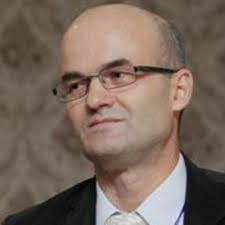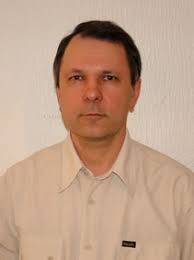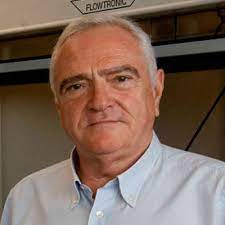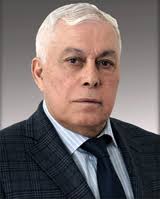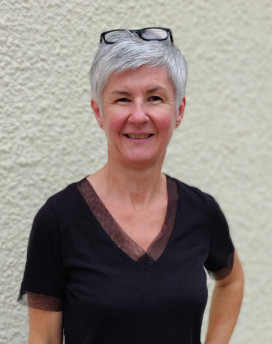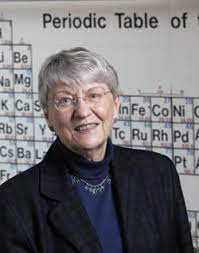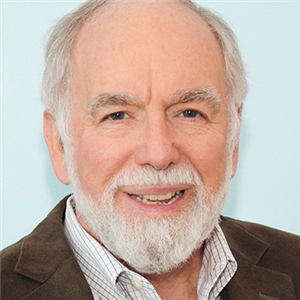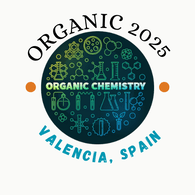Sessions/Tracks
1. Advanced Organic Synthesis Strategies
Advanced organic synthesis strategies focus on innovative approaches to construct complex molecules efficiently and selectively. These strategies often involve retrosynthetic analysis, which breaks down target molecules into simpler precursors, allowing chemists to plan step-by-step pathways. The use of protecting groups is crucial to shield functional groups during specific reaction steps, ensuring chemo selectivity. Modern strategies incorporate flow chemistry, enabling continuous synthesis processes that enhance scalability and reaction control. Automation and machine learning are also being used to predict reaction outcomes and optimize conditions. Techniques like microwave-assisted synthesis and photochemical reactions accelerate reaction rates and improve yields. Researchers are exploring cascade reactions, where multiple transformations occur in a single step, minimizing intermediate isolation. Advanced methods also integrate cross-coupling reactions, multicomponent reactions, and tandem strategies to simplify complex syntheses. This field is critical for industries like pharmaceuticals, agrochemicals, and materials science, where efficient and sustainable molecule production is key.
Related Societies and Associations :
Europe:
European Society of Organic Chemistry (ESOC) , Royal Society of Chemistry (RSC) - Organic Chemistry Division , German Chemical Society (GDCh), French Chemical Society (Société Chimique de France(SCF) , Italian Chemical Society (SCI), Swiss Chemical Society (SCS)
Asia Pacific and Middle East :
Asian Chemical Congress (ACC) , Chemical Society of Japan (CSJ) , Indian Chemical Society (ICS), Korean Chemical Society (KCS), Taiwan Chemical Society (TCS) ,Iranian Chemical Society (ICS), Middle East Chemistry Conference (MECC)
America:
American Chemical Society (ACS) - Organic Chemistry Division , Society of Synthetic Organic Chemistry Japan (SSOCJ) , Brazilian Society of Chemistry (SBQ),American Institute of Chemical Engineers (AIChE), Mexican Chemical Society (SMQ),Argentine Chemical Society (SAQ)
2. Design and Synthesis of Bioactive Molecules
The design and synthesis of bioactive molecules involve creating compounds with specific biological functions, such as drugs, pesticides, or enzyme inhibitors. It begins with understanding the biological target, such as a protein, receptor, or enzyme, and designing molecules that interact selectively with it. Structure-based drug design (SBDD) uses computational tools to model target structures and predict binding affinities. Functional group modifications, like adding hydrophobic or hydrophilic groups, optimize pharmacokinetics, such as absorption and metabolism. Researchers use medicinal chemistry techniques to refine lead compounds, enhancing potency and reducing side effects. Strategies like scaffold hopping or fragment-based drug discovery (FBDD) are employed to identify and develop novel bioactive scaffolds. Chemical synthesis enables the preparation of derivatives to test biological activity. This area is essential for drug discovery, improving existing therapies, and creating molecules for diagnostic and therapeutic applications.
Related Societies and Associations :
Europe:
European Society of Organic Chemistry (ESOC) , Royal Society of Chemistry (RSC) - Organic Chemistry Division , German Chemical Society (GDCh), French Chemical Society (Société Chimique de France(SCF) , Italian Chemical Society (SCI), Swiss Chemical Society (SCS)
Asia Pacific and Middle East :
Asian Chemical Congress (ACC) , Chemical Society of Japan (CSJ) , Indian Chemical Society (ICS), Korean Chemical Society (KCS), Taiwan Chemical Society (TCS) ,Iranian Chemical Society (ICS), Middle East Chemistry Conference (MECC)
America:
American Chemical Society (ACS) - Organic Chemistry Division , Society of Synthetic Organic Chemistry Japan (SSOCJ) , Brazilian Society of Chemistry (SBQ),American Institute of Chemical Engineers (AIChE), Mexican Chemical Society (SMQ),Argentine Chemical Society (SAQ)
3. Asymmetric Synthesis and Stereoselectivity
Asymmetric synthesis focuses on creating chiral molecules with specific stereochemistry, a critical aspect of pharmaceuticals, agrochemicals, and flavors. Many biological processes are stereospecific, meaning that different enantiomers of a compound can have distinct effects. Asymmetric catalysis, including the use of chiral organocatalysts, metal complexes, or enzymes, is a primary approach for achieving stereocontrol. Techniques like kinetic resolution separate enantiomers based on reaction rates, while dynamic kinetic resolution integrates this with racemization to improve efficiency. Chiral auxiliaries temporarily impart stereochemistry to molecules, which is removed after the reaction. Asymmetric hydrogenation and epoxidation are widely used in industrial processes to create chiral centers. Researchers also employ stereoselective cycloadditions and cross-coupling reactions. Advances in this field ensure the production of high-purity chiral drugs, reducing the risk of side effects and improving therapeutic efficacy.
Related Societies and Associations :
Europe:
European Society of Organic Chemistry (ESOC) , Royal Society of Chemistry (RSC) - Organic Chemistry Division , German Chemical Society (GDCh), French Chemical Society (Société Chimique de France(SCF) , Italian Chemical Society (SCI), Swiss Chemical Society (SCS)
Asia Pacific and Middle East :
Asian Chemical Congress (ACC) , Chemical Society of Japan (CSJ) , Indian Chemical Society (ICS), Korean Chemical Society (KCS), Taiwan Chemical Society (TCS) ,Iranian Chemical Society (ICS), Middle East Chemistry Conference (MECC)
America:
American Chemical Society (ACS) - Organic Chemistry Division , Society of Synthetic Organic Chemistry Japan (SSOCJ) , Brazilian Society of Chemistry (SBQ),American Institute of Chemical Engineers (AIChE), Mexican Chemical Society (SMQ),Argentine Chemical Society (SAQ)
4. Catalysis in Organic Synthesis
Catalysis plays a pivotal role in organic synthesis, significantly enhancing reaction efficiency and selectivity. Catalysts, which are not consumed during reactions, enable transformations under milder conditions, saving energy and resources. Homogeneous catalysis uses soluble catalysts, such as transition metal complexes, for precise control over reaction outcomes. Heterogeneous catalysis employs solid catalysts, which are easily separable and recyclable, making them industrially viable. Organocatalysis has gained prominence due to its metal-free, eco-friendly nature, often employing small organic molecules like proline or thioureas. Enzymatic catalysis utilizes natural or engineered enzymes for highly specific and efficient transformations. Key catalytic reactions include hydrogenation, oxidation, and cross-coupling (e.g., Suzuki, Heck, and Sonogashira). Photocatalysis and electrocatalysis leverage light and electricity, respectively, to drive chemical reactions. Catalysis in organic synthesis is integral to producing pharmaceuticals, agrochemicals, and materials with reduced environmental impact.
Related Societies and Associations :
Europe:
European Society of Organic Chemistry (ESOC) , Royal Society of Chemistry (RSC) - Organic Chemistry Division , German Chemical Society (GDCh), French Chemical Society (Société Chimique de France(SCF) , Italian Chemical Society (SCI), Swiss Chemical Society (SCS)
Asia Pacific and Middle East :
Asian Chemical Congress (ACC) , Chemical Society of Japan (CSJ) , Indian Chemical Society (ICS), Korean Chemical Society (KCS), Taiwan Chemical Society (TCS) ,Iranian Chemical Society (ICS), Middle East Chemistry Conference (MECC)
America:
American Chemical Society (ACS) - Organic Chemistry Division , Society of Synthetic Organic Chemistry Japan (SSOCJ) , Brazilian Society of Chemistry (SBQ),American Institute of Chemical Engineers (AIChE), Mexican Chemical Society (SMQ),Argentine Chemical Society (SAQ)
5. Sustainable and Green Organic Synthesis
Sustainable and green organic synthesis aligns with environmental principles by minimizing waste, reducing energy consumption, and avoiding toxic reagents. Atom economy is a key metric, aiming to incorporate all reactants into the final product. Solvent-free reactions eliminate harmful solvents, while alternative solvents like water, ionic liquids, and supercritical CO? are eco-friendly options. Catalysis is crucial in green chemistry, allowing for lower temperatures and reduced reagent use. Microwave-assisted synthesis and flow chemistry improve energy efficiency and reaction control. Renewable feedstocks, such as biomass-derived chemicals, replace petroleum-based reagents. Techniques like cascade reactions and multicomponent reactions minimize steps and waste. Advances in biodegradable polymers and recyclable catalysts further enhance sustainability. Green synthesis contributes to cleaner pharmaceutical production, reduces environmental hazards in the chemical industry, and aligns with global sustainability goals.
Related Societies and Associations :
Europe:
European Society of Organic Chemistry (ESOC) , Royal Society of Chemistry (RSC) - Organic Chemistry Division , German Chemical Society (GDCh), French Chemical Society (Société Chimique de France(SCF) , Italian Chemical Society (SCI), Swiss Chemical Society (SCS)
Asia Pacific and Middle East :
Asian Chemical Congress (ACC) , Chemical Society of Japan (CSJ) , Indian Chemical Society (ICS), Korean Chemical Society (KCS), Taiwan Chemical Society (TCS) ,Iranian Chemical Society (ICS), Middle East Chemistry Conference (MECC)
America:
American Chemical Society (ACS) - Organic Chemistry Division , Society of Synthetic Organic Chemistry Japan (SSOCJ) , Brazilian Society of Chemistry (SBQ),American Institute of Chemical Engineers (AIChE), Mexican Chemical Society (SMQ),Argentine Chemical Society (SAQ)
6. Organic Reaction Mechanisms and Dynamics
Understanding organic reaction mechanisms involves studying the detailed steps of a chemical reaction, including bond-breaking and bond-forming processes. Mechanisms provide insights into reaction kinetics, thermodynamics, and intermediates, enabling chemists to predict outcomes and design novel reactions. Techniques like spectroscopy (NMR, IR) and computational chemistry elucidate transition states and intermediates. Reaction dynamics explores how molecular motions influence reaction rates and pathways. Key mechanisms include nucleophilic substitution, electrophilic addition, elimination, and rearrangement reactions. Catalytic mechanisms, such as in organometallic and enzymatic reactions, reveal how catalysts lower activation energy and guide selectivity. Advanced studies in photochemistry and radical reactions expand synthetic possibilities. Understanding mechanisms is fundamental for designing efficient, selective, and innovative organic transformations.
Related Societies and Associations :
Europe:
European Society of Organic Chemistry (ESOC) , Royal Society of Chemistry (RSC) - Organic Chemistry Division , German Chemical Society (GDCh), French Chemical Society (Société Chimique de France(SCF) , Italian Chemical Society (SCI), Swiss Chemical Society (SCS)
Asia Pacific and Middle East :
Asian Chemical Congress (ACC) , Chemical Society of Japan (CSJ) , Indian Chemical Society (ICS), Korean Chemical Society (KCS), Taiwan Chemical Society (TCS) ,Iranian Chemical Society (ICS), Middle East Chemistry Conference (MECC)
America:
American Chemical Society (ACS) - Organic Chemistry Division , Society of Synthetic Organic Chemistry Japan (SSOCJ) , Brazilian Society of Chemistry (SBQ),American Institute of Chemical Engineers (AIChE), Mexican Chemical Society (SMQ),Argentine Chemical Society (SAQ)
7. Applications of Organometallic Compounds in Synthesis
Organometallic compounds, containing metal-carbon bonds, are invaluable in organic synthesis for their unique reactivity and selectivity. Transition metals like palladium, nickel, and rhodium facilitate cross-coupling reactions, such as Suzuki, Heck, and Stille reactions, for constructing carbon-carbon and carbon-heteroatom bonds. Organometallic reagents like Grignard and organolithium compounds act as nucleophiles in various reactions. Metal-catalyzed reactions, such as hydrogenation, olefin metathesis, and C-H activation, provide efficient pathways for complex molecule synthesis. Organometallic compounds also enable stereoselective transformations and are integral in asymmetric synthesis. Their applications extend to pharmaceuticals, polymers, and material science, driving innovations in synthetic chemistry.
Related Societies and Associations :
Europe:
European Society of Organic Chemistry (ESOC) , Royal Society of Chemistry (RSC) - Organic Chemistry Division , German Chemical Society (GDCh), French Chemical Society (Société Chimique de France(SCF) , Italian Chemical Society (SCI), Swiss Chemical Society (SCS)
Asia Pacific and Middle East :
Asian Chemical Congress (ACC) , Chemical Society of Japan (CSJ) , Indian Chemical Society (ICS), Korean Chemical Society (KCS), Taiwan Chemical Society (TCS) ,Iranian Chemical Society (ICS), Middle East Chemistry Conference (MECC)
America:
American Chemical Society (ACS) - Organic Chemistry Division , Society of Synthetic Organic Chemistry Japan (SSOCJ) , Brazilian Society of Chemistry (SBQ),American Institute of Chemical Engineers (AIChE), Mexican Chemical Society (SMQ),Argentine Chemical Society (SAQ)
8. Multi-Step Organic Synthesis
Multi-step organic synthesis involves sequentially combining reactions to construct complex molecules from simpler precursors. Each step must maintain high yields, selectivity, and compatibility with intermediates. Protecting groups are often employed to prevent unwanted side reactions. Purification and isolation between steps are minimized to enhance efficiency. Strategic use of cascade and tandem reactions integrates multiple transformations in a single operation. Advanced techniques like flow chemistry allow continuous synthesis with improved control. Multi-step synthesis is crucial for producing pharmaceuticals, agrochemicals, and natural products, where intricate structures require careful planning and execution.
Related Societies and Associations :
Europe:
European Society of Organic Chemistry (ESOC) , Royal Society of Chemistry (RSC) - Organic Chemistry Division , German Chemical Society (GDCh), French Chemical Society (Société Chimique de France(SCF) , Italian Chemical Society (SCI), Swiss Chemical Society (SCS)
Asia Pacific and Middle East :
Asian Chemical Congress (ACC) , Chemical Society of Japan (CSJ) , Indian Chemical Society (ICS), Korean Chemical Society (KCS), Taiwan Chemical Society (TCS) ,Iranian Chemical Society (ICS), Middle East Chemistry Conference (MECC)
America:
American Chemical Society (ACS) - Organic Chemistry Division , Society of Synthetic Organic Chemistry Japan (SSOCJ) , Brazilian Society of Chemistry (SBQ),American Institute of Chemical Engineers (AIChE), Mexican Chemical Society (SMQ),Argentine Chemical Society (SAQ)
9. Novel Synthetic Pathways for Drug Discovery
Novel synthetic pathways accelerate drug discovery by providing efficient routes to structurally diverse compounds. Techniques like click chemistry enable fast, high-yield reactions under mild conditions. Photoredox catalysis uses light to drive challenging transformations, while C-H activation simplifies functionalization. Fragment-based drug design (FBDD) assembles small molecular fragments into potent drug candidates. Biocatalysis introduces enzymatic reactions for high selectivity. These pathways reduce development time, costs, and waste, fostering innovation in pharmaceuticals.
Related Societies and Associations :
Europe:
European Society of Organic Chemistry (ESOC) , Royal Society of Chemistry (RSC) - Organic Chemistry Division , German Chemical Society (GDCh), French Chemical Society (Société Chimique de France(SCF) , Italian Chemical Society (SCI), Swiss Chemical Society (SCS)
Asia Pacific and Middle East :
Asian Chemical Congress (ACC) , Chemical Society of Japan (CSJ) , Indian Chemical Society (ICS), Korean Chemical Society (KCS), Taiwan Chemical Society (TCS) ,Iranian Chemical Society (ICS), Middle East Chemistry Conference (MECC)
America:
American Chemical Society (ACS) - Organic Chemistry Division , Society of Synthetic Organic Chemistry Japan (SSOCJ) , Brazilian Society of Chemistry (SBQ),American Institute of Chemical Engineers (AIChE), Mexican Chemical Society (SMQ),Argentine Chemical Society (SAQ)
10. Natural Product Synthesis and Derivatization
Natural product synthesis replicates complex molecules from nature, such as alkaloids, terpenes, and polyketides. These molecules inspire new drug discoveries and provide scaffolds for medicinal chemistry. Total synthesis involves recreating natural products from basic precursors, while derivatization modifies these compounds to enhance activity or reduce side effects. Challenges include stereochemical complexity and multi-step reactions. Advances in this field contribute to medicine, agriculture, and material science.
Related Societies and Associations :
Europe:
European Society of Organic Chemistry (ESOC) , Royal Society of Chemistry (RSC) - Organic Chemistry Division , German Chemical Society (GDCh), French Chemical Society (Société Chimique de France(SCF) , Italian Chemical Society (SCI), Swiss Chemical Society (SCS)
Asia Pacific and Middle East :
Asian Chemical Congress (ACC) , Chemical Society of Japan (CSJ) , Indian Chemical Society (ICS), Korean Chemical Society (KCS), Taiwan Chemical Society (TCS) ,Iranian Chemical Society (ICS), Middle East Chemistry Conference (MECC)
America:
American Chemical Society (ACS) - Organic Chemistry Division , Society of Synthetic Organic Chemistry Japan (SSOCJ) , Brazilian Society of Chemistry (SBQ),American Institute of Chemical Engineers (AIChE), Mexican Chemical Society (SMQ),Argentine Chemical Society (SAQ)
11. Photoredox and Electrochemical Organic Synthesis
Photoredox and electrochemical organic synthesis utilize light and electricity, respectively, to drive chemical transformations. Photoredox catalysis harnesses visible light and catalysts to initiate reactions, enabling the activation of otherwise inert molecules. This approach allows for new bond formations, such as C–C and C–N bonds, under mild conditions. Electrochemical synthesis employs the application of electric currents to promote oxidation and reduction reactions, facilitating transformations without the need for traditional chemical reagents. These techniques are particularly useful for environmentally friendly processes, as they reduce the need for hazardous chemicals and high temperatures. Applications include the synthesis of complex molecules, drug intermediates, and fine chemicals, offering green alternatives to conventional synthetic methods.
Related Societies and Associations :
Europe:
European Society of Organic Chemistry (ESOC) , Royal Society of Chemistry (RSC) - Organic Chemistry Division , German Chemical Society (GDCh), French Chemical Society (Société Chimique de France(SCF) , Italian Chemical Society (SCI), Swiss Chemical Society (SCS)
Asia Pacific and Middle East :
Asian Chemical Congress (ACC) , Chemical Society of Japan (CSJ) , Indian Chemical Society (ICS), Korean Chemical Society (KCS), Taiwan Chemical Society (TCS) ,Iranian Chemical Society (ICS), Middle East Chemistry Conference (MECC)
America:
American Chemical Society (ACS) - Organic Chemistry Division , Society of Synthetic Organic Chemistry Japan (SSOCJ) , Brazilian Society of Chemistry (SBQ),American Institute of Chemical Engineers (AIChE), Mexican Chemical Society (SMQ),Argentine Chemical Society (SAQ)
12. Synthetic Approaches to Heterocyclic Compounds
Heterocyclic compounds, which contain atoms other than carbon in their ring structure (e.g., nitrogen, oxygen, sulfur), are central to many bioactive molecules, including pharmaceuticals and agrochemicals. Synthetic strategies to create heterocycles include cyclization reactions, where simple precursors undergo ring closure to form heterocyclic structures. Approaches like nucleophilic substitution, electrophilic aromatic substitution, and metal-catalyzed cyclization are commonly used. Heterocyclic compounds can also be synthesized through the use of catalytic processes such as transition metal-catalyzed cross-couplings or ring-closing reactions. The development of selective, efficient, and green methods for heterocycle synthesis remains a priority in synthetic chemistry due to their broad biological and chemical significance.
Related Societies and Associations :
Europe:
European Society of Organic Chemistry (ESOC) , Royal Society of Chemistry (RSC) - Organic Chemistry Division , German Chemical Society (GDCh), French Chemical Society (Société Chimique de France(SCF) , Italian Chemical Society (SCI), Swiss Chemical Society (SCS)
Asia Pacific and Middle East :
Asian Chemical Congress (ACC) , Chemical Society of Japan (CSJ) , Indian Chemical Society (ICS), Korean Chemical Society (KCS), Taiwan Chemical Society (TCS) ,Iranian Chemical Society (ICS), Middle East Chemistry Conference (MECC)
America:
American Chemical Society (ACS) - Organic Chemistry Division , Society of Synthetic Organic Chemistry Japan (SSOCJ) , Brazilian Society of Chemistry (SBQ),American Institute of Chemical Engineers (AIChE), Mexican Chemical Society (SMQ),Argentine Chemical Society (SAQ)
13. Computational Approaches in Organic Synthesis
Computational approaches in organic synthesis utilize modeling, simulations, and data analysis to predict reaction outcomes, optimize synthetic routes, and design new reactions. Quantum chemistry and density functional theory (DFT) are applied to study reaction mechanisms, transition states, and intermediates, helping chemists understand the energetics of processes. Machine learning and artificial intelligence are becoming increasingly important, assisting in reaction prediction, reagent selection, and process optimization. These tools enhance the efficiency of synthetic chemistry by enabling virtual screening of reaction pathways, thus reducing experimental trial-and-error. Computational chemistry is particularly useful in the development of new catalysts, designing more sustainable processes, and streamlining drug discovery.
Related Societies and Associations :
Europe:
European Society of Organic Chemistry (ESOC) , Royal Society of Chemistry (RSC) - Organic Chemistry Division , German Chemical Society (GDCh), French Chemical Society (Société Chimique de France(SCF) , Italian Chemical Society (SCI), Swiss Chemical Society (SCS)
Asia Pacific and Middle East :
Asian Chemical Congress (ACC) , Chemical Society of Japan (CSJ) , Indian Chemical Society (ICS), Korean Chemical Society (KCS), Taiwan Chemical Society (TCS) ,Iranian Chemical Society (ICS), Middle East Chemistry Conference (MECC)
America:
American Chemical Society (ACS) - Organic Chemistry Division , Society of Synthetic Organic Chemistry Japan (SSOCJ) , Brazilian Society of Chemistry (SBQ),American Institute of Chemical Engineers (AIChE), Mexican Chemical Society (SMQ),Argentine Chemical Society (SAQ)
14. Advancements in Synthetic Methodology Development
Advancements in synthetic methodology development focus on improving the efficiency, selectivity, and scalability of chemical reactions. The field is evolving through innovations such as automated reaction systems, which enhance reproducibility and speed. New strategies like multicomponent reactions (MCRs) and cascade reactions are increasingly important, enabling the rapid construction of complex molecules in fewer steps. The development of greener methods, including solvent-free reactions, microwave irradiation, and the use of renewable feedstocks, is also a major area of progress. Additionally, new catalytic processes, such as photocatalysis and electrocatalysis, offer sustainable alternatives for traditional synthetic routes. These advancements aim to streamline the process of drug development, materials science, and specialty chemicals.
Related Societies and Associations :
Europe:
European Society of Organic Chemistry (ESOC) , Royal Society of Chemistry (RSC) - Organic Chemistry Division , German Chemical Society (GDCh), French Chemical Society (Société Chimique de France(SCF) , Italian Chemical Society (SCI), Swiss Chemical Society (SCS)
Asia Pacific and Middle East :
Asian Chemical Congress (ACC) , Chemical Society of Japan (CSJ) , Indian Chemical Society (ICS), Korean Chemical Society (KCS), Taiwan Chemical Society (TCS) ,Iranian Chemical Society (ICS), Middle East Chemistry Conference (MECC)
America:
American Chemical Society (ACS) - Organic Chemistry Division , Society of Synthetic Organic Chemistry Japan (SSOCJ) , Brazilian Society of Chemistry (SBQ),American Institute of Chemical Engineers (AIChE), Mexican Chemical Society (SMQ),Argentine Chemical Society (SAQ)
15. Supramolecular Chemistry and Synthesis
Supramolecular chemistry studies non-covalent interactions between molecules, forming structures that go beyond traditional covalent bonds. This field has led to the development of molecular recognition, where molecules selectively interact to form specific complexes, and the creation of molecular machines and sensors. Supramolecular synthesis involves designing and assembling these structures using interactions such as hydrogen bonding, π-π stacking, and van der Waals forces. Applications include drug delivery systems, nanomaterials, and catalysis. Advances in supramolecular chemistry also involve the synthesis of host-guest complexes, where a larger molecule (host) selectively binds to a smaller molecule (guest), enabling applications in molecular sensing, storage, and controlled release.
Related Societies and Associations :
Europe:
European Society of Organic Chemistry (ESOC) , Royal Society of Chemistry (RSC) - Organic Chemistry Division , German Chemical Society (GDCh), French Chemical Society (Société Chimique de France(SCF) , Italian Chemical Society (SCI), Swiss Chemical Society (SCS)
Asia Pacific and Middle East :
Asian Chemical Congress (ACC) , Chemical Society of Japan (CSJ) , Indian Chemical Society (ICS), Korean Chemical Society (KCS), Taiwan Chemical Society (TCS) ,Iranian Chemical Society (ICS), Middle East Chemistry Conference (MECC)
America:
American Chemical Society (ACS) - Organic Chemistry Division , Society of Synthetic Organic Chemistry Japan (SSOCJ) , Brazilian Society of Chemistry (SBQ),American Institute of Chemical Engineers (AIChE), Mexican Chemical Society (SMQ),Argentine Chemical Society (SAQ)
16. Enzyme-Catalyzed Organic Synthesis
Enzyme-catalyzed organic synthesis leverages the high specificity and efficiency of biological catalysts (enzymes) to drive organic transformations. Enzymes catalyze a variety of reactions, including oxidation, reduction, hydrolysis, and bond-forming processes. These catalysts often operate under mild conditions, offering a green alternative to traditional chemical synthesis. The use of enzymes can lead to high stereoselectivity and regioselectivity, making them invaluable in the synthesis of complex molecules, especially pharmaceuticals. Techniques like enzyme engineering and immobilization are being employed to enhance enzyme stability and activity for industrial applications. Biocatalysis plays a significant role in green chemistry, providing environmentally friendly solutions for large-scale chemical production.
Related Societies and Associations :
Europe:
European Society of Organic Chemistry (ESOC) , Royal Society of Chemistry (RSC) - Organic Chemistry Division , German Chemical Society (GDCh), French Chemical Society (Société Chimique de France(SCF) , Italian Chemical Society (SCI), Swiss Chemical Society (SCS)
Asia Pacific and Middle East :
Asian Chemical Congress (ACC) , Chemical Society of Japan (CSJ) , Indian Chemical Society (ICS), Korean Chemical Society (KCS), Taiwan Chemical Society (TCS) ,Iranian Chemical Society (ICS), Middle East Chemistry Conference (MECC)
America:
American Chemical Society (ACS) - Organic Chemistry Division , Society of Synthetic Organic Chemistry Japan (SSOCJ) , Brazilian Society of Chemistry (SBQ),American Institute of Chemical Engineers (AIChE), Mexican Chemical Society (SMQ),Argentine Chemical Society (SAQ)
17. Chirality in Organic Synthesis
Chirality refers to the property of a molecule having a non-superimposable mirror image, known as enantiomers. In organic synthesis, controlling chirality is crucial since different enantiomers can exhibit vastly different biological activities. Techniques like asymmetric synthesis, where chiral catalysts or reagents are used to selectively produce one enantiomer, are central to chirality control. Methods like enzymatic catalysis, organocatalysis, and chiral pool synthesis allow for the production of high-purity chiral molecules. Chirality is especially important in the pharmaceutical industry, as many drugs are chiral, and the incorrect enantiomer can have undesirable or toxic effects. Therefore, controlling chirality is a key challenge in organic synthesis.
Related Societies and Associations :
Europe:
European Society of Organic Chemistry (ESOC) , Royal Society of Chemistry (RSC) - Organic Chemistry Division , German Chemical Society (GDCh), French Chemical Society (Société Chimique de France(SCF) , Italian Chemical Society (SCI), Swiss Chemical Society (SCS)
Asia Pacific and Middle East :
Asian Chemical Congress (ACC) , Chemical Society of Japan (CSJ) , Indian Chemical Society (ICS), Korean Chemical Society (KCS), Taiwan Chemical Society (TCS) ,Iranian Chemical Society (ICS), Middle East Chemistry Conference (MECC)
America:
American Chemical Society (ACS) - Organic Chemistry Division , Society of Synthetic Organic Chemistry Japan (SSOCJ) , Brazilian Society of Chemistry (SBQ),American Institute of Chemical Engineers (AIChE), Mexican Chemical Society (SMQ),Argentine Chemical Society (SAQ)
18. Flow Chemistry in Organic Synthesis
Flow chemistry involves conducting chemical reactions in a continuous flow rather than in batch reactors. This approach allows for precise control over reaction conditions, such as temperature, pressure, and concentration, leading to higher yields and improved safety. The use of microreactors, where reactions take place in small volumes, is a key component of flow chemistry, enabling rapid mixing and heat exchange. Flow chemistry is particularly useful for large-scale production, as it reduces reaction times and minimizes waste. It is widely applied in pharmaceuticals, agrochemicals, and specialty chemicals, offering an efficient and scalable alternative to traditional batch processes. Furthermore, it can integrate well with automation, improving reproducibility and consistency.
Related Societies and Associations :
Europe:
European Society of Organic Chemistry (ESOC) , Royal Society of Chemistry (RSC) - Organic Chemistry Division , German Chemical Society (GDCh), French Chemical Society (Société Chimique de France(SCF) , Italian Chemical Society (SCI), Swiss Chemical Society (SCS)
Asia Pacific and Middle East :
Asian Chemical Congress (ACC) , Chemical Society of Japan (CSJ) , Indian Chemical Society (ICS), Korean Chemical Society (KCS), Taiwan Chemical Society (TCS) ,Iranian Chemical Society (ICS), Middle East Chemistry Conference (MECC)
America:
American Chemical Society (ACS) - Organic Chemistry Division , Society of Synthetic Organic Chemistry Japan (SSOCJ) , Brazilian Society of Chemistry (SBQ),American Institute of Chemical Engineers (AIChE), Mexican Chemical Society (SMQ),Argentine Chemical Society (SAQ)
19. Synthetic Polymers and Polymerization Techniques
Synthetic polymers are large molecules made from repeating monomer units through polymerization reactions. Polymerization techniques include addition (chain-growth) polymerization, where monomers with unsaturated bonds are added to a growing chain, and condensation (step-growth) polymerization, where small molecules like water are eliminated during bond formation. Innovations in polymerization techniques include controlled/living polymerization methods, such as atom transfer radical polymerization (ATRP) and ring-opening metathesis polymerization (ROMP), which allow for precise control over molecular weight, structure, and functionality. Polymers are used in a wide range of applications, from packaging and textiles to drug delivery systems and biocompatible materials. Ongoing research focuses on sustainable polymers, including those derived from renewable resources or biodegradable options.
Related Societies and Associations :
Europe:
European Society of Organic Chemistry (ESOC) , Royal Society of Chemistry (RSC) - Organic Chemistry Division , German Chemical Society (GDCh), French Chemical Society (Société Chimique de France(SCF) , Italian Chemical Society (SCI), Swiss Chemical Society (SCS)
Asia Pacific and Middle East :
Asian Chemical Congress (ACC) , Chemical Society of Japan (CSJ) , Indian Chemical Society (ICS), Korean Chemical Society (KCS), Taiwan Chemical Society (TCS) ,Iranian Chemical Society (ICS), Middle East Chemistry Conference (MECC)
America:
American Chemical Society (ACS) - Organic Chemistry Division , Society of Synthetic Organic Chemistry Japan (SSOCJ) , Brazilian Society of Chemistry (SBQ),American Institute of Chemical Engineers (AIChE), Mexican Chemical Society (SMQ),Argentine Chemical Society (SAQ)
20. Innovations in Medicinal Chemistry through Synthesis
Innovations in medicinal chemistry are driven by advances in synthetic chemistry, enabling the creation of novel drug candidates and improving therapeutic strategies. New synthetic methodologies allow for more efficient and selective production of bioactive molecules with better pharmacokinetics and reduced toxicity. Targeted drug delivery systems, such as prodrugs and nanoparticles, are being developed to improve drug efficacy and reduce side effects. The synthesis of complex natural products and their derivatives continues to inspire new drug designs, while the exploration of chemical libraries through high-throughput screening accelerates drug discovery. Synthesis techniques, including combinatorial chemistry and structure-based drug design (SBDD), are used to identify new compounds for a wide range of diseases, from cancer to neurological disorders.
Related Societies and Associations :
Europe:
European Society of Organic Chemistry (ESOC) , Royal Society of Chemistry (RSC) - Organic Chemistry Division , German Chemical Society (GDCh), French Chemical Society (Société Chimique de France(SCF) , Italian Chemical Society (SCI), Swiss Chemical Society (SCS)
Asia Pacific and Middle East :
Asian Chemical Congress (ACC) , Chemical Society of Japan (CSJ) , Indian Chemical Society (ICS), Korean Chemical Society (KCS), Taiwan Chemical Society (TCS) ,Iranian Chemical Society (ICS), Middle East Chemistry Conference (MECC)
America:
American Chemical Society (ACS) - Organic Chemistry Division , Society of Synthetic Organic Chemistry Japan (SSOCJ) , Brazilian Society of Chemistry (SBQ),American Institute of Chemical Engineers (AIChE), Mexican Chemical Society (SMQ),Argentine Chemical Society (SAQ)
21. Green and Environmental Chemistry
Green chemistry focuses on the design of chemical processes that minimize environmental impact and maximize sustainability. It emphasizes the use of renewable resources, the reduction of waste, and the use of energy-efficient processes. Green synthesis strategies include solvent-free reactions, the use of non-toxic reagents, and recycling catalysts. The goal is to replace hazardous chemicals with safer alternatives and reduce the carbon footprint of industrial processes. Key principles of green chemistry also include atom economy, where the maximum amount of reactants is incorporated into the final product, and energy-efficient methods like microwave-assisted and flow chemistry. Green chemistry plays a critical role in reducing the environmental impact of industries such as pharmaceuticals, agriculture, and materials science.
Related Societies and Associations :
Europe:
European Society of Organic Chemistry (ESOC) , Royal Society of Chemistry (RSC) - Organic Chemistry Division , German Chemical Society (GDCh), French Chemical Society (Société Chimique de France(SCF) , Italian Chemical Society (SCI), Swiss Chemical Society (SCS)
Asia Pacific and Middle East :
Asian Chemical Congress (ACC) , Chemical Society of Japan (CSJ) , Indian Chemical Society (ICS), Korean Chemical Society (KCS), Taiwan Chemical Society (TCS) ,Iranian Chemical Society (ICS), Middle East Chemistry Conference (MECC)
America:
American Chemical Society (ACS) - Organic Chemistry Division , Society of Synthetic Organic Chemistry Japan (SSOCJ) , Brazilian Society of Chemistry (SBQ),American Institute of Chemical Engineers (AIChE), Mexican Chemical Society (SMQ),Argentine Chemical Society (SAQ)
22. Structure and Reactivity of Organic Compounds
The structure and reactivity of organic compounds are central to understanding how molecules behave in chemical reactions. The arrangement of atoms, functional groups, and electron density in a molecule determines how it will interact with other substances. Studying reactivity involves exploring the mechanism of reactions, including the breaking and forming of bonds, and understanding factors like steric and electronic effects that influence reaction rates. The reactivity of organic compounds is studied through techniques such as spectroscopy (NMR, IR, mass spectrometry) and computational chemistry, which provide insights into molecular properties and reaction pathways. This knowledge enables the design of new reactions and the optimization of existing ones for use in synthetic chemistry.
Related Societies and Associations :
Europe:
European Society of Organic Chemistry (ESOC) , Royal Society of Chemistry (RSC) - Organic Chemistry Division , German Chemical Society (GDCh), French Chemical Society (Société Chimique de France(SCF) , Italian Chemical Society (SCI), Swiss Chemical Society (SCS)
Asia Pacific and Middle East :
Asian Chemical Congress (ACC) , Chemical Society of Japan (CSJ) , Indian Chemical Society (ICS), Korean Chemical Society (KCS), Taiwan Chemical Society (TCS) ,Iranian Chemical Society (ICS), Middle East Chemistry Conference (MECC)
America:
American Chemical Society (ACS) - Organic Chemistry Division , Society of Synthetic Organic Chemistry Japan (SSOCJ) , Brazilian Society of Chemistry (SBQ),American Institute of Chemical Engineers (AIChE), Mexican Chemical Society (SMQ),Argentine Chemical Society (SAQ)
23. Natural Products and Heterocyclic Chemistry
Natural products and heterocyclic chemistry intersect when natural products contain heterocyclic structures—rings with atoms other than carbon. These molecules, often derived from plants, microorganisms, and marine organisms, are a rich source of bioactive compounds with applications in medicine and agriculture. Heterocyclic chemistry plays a central role in drug discovery, as many pharmaceuticals contain heterocyclic rings that contribute to their biological activity. Advances in the synthesis of hetero cycles from natural products have led to the development of antibiotics, anticancer agents, and other therapeutics. The challenge lies in synthesizing these complex structures efficiently while maintaining their biological activity, often involving strategies like total synthesis, semi-synthesis, and combinatorial chemistry.
Related Societies and Associations :
Europe:
European Society of Organic Chemistry (ESOC) , Royal Society of Chemistry (RSC) - Organic Chemistry Division , German Chemical Society (GDCh), French Chemical Society (Société Chimique de France(SCF) , Italian Chemical Society (SCI), Swiss Chemical Society (SCS)
Asia Pacific and Middle East :
Asian Chemical Congress (ACC) , Chemical Society of Japan (CSJ) , Indian Chemical Society (ICS), Korean Chemical Society (KCS), Taiwan Chemical Society (TCS) ,Iranian Chemical Society (ICS), Middle East Chemistry Conference (MECC)
America:
American Chemical Society (ACS) - Organic Chemistry Division , Society of Synthetic Organic Chemistry Japan (SSOCJ) , Brazilian Society of Chemistry (SBQ),American Institute of Chemical Engineers (AIChE), Mexican Chemical Society (SMQ),Argentine Chemical Society (SAQ)
24. Organometallic Polymers
Organometallic polymers are materials that combine organic polymers with metal-containing components, offering unique electronic, magnetic, and catalytic properties. These polymers are synthesized using metal-catalyzed polymerization reactions, where metal centers influence the polymer structure and properties. Organometallic polymers are used in a variety of applications, including electronic devices, sensors, and catalysts. They also play a role in green chemistry, where their ability to catalyze reactions can improve the efficiency and selectivity of synthetic processes. Research continues to explore the synthesis of new organometallic polymers with enhanced properties for specific applications, such as in energy storage, drug delivery, and renewable energy technologies.
Related Societies and Associations :
Europe:
European Society of Organic Chemistry (ESOC) , Royal Society of Chemistry (RSC) - Organic Chemistry Division , German Chemical Society (GDCh), French Chemical Society (Société Chimique de France(SCF) , Italian Chemical Society (SCI), Swiss Chemical Society (SCS)
Asia Pacific and Middle East :
Asian Chemical Congress (ACC) , Chemical Society of Japan (CSJ) , Indian Chemical Society (ICS), Korean Chemical Society (KCS), Taiwan Chemical Society (TCS) ,Iranian Chemical Society (ICS), Middle East Chemistry Conference (MECC)
America:
American Chemical Society (ACS) - Organic Chemistry Division , Society of Synthetic Organic Chemistry Japan (SSOCJ) , Brazilian Society of Chemistry (SBQ),American Institute of Chemical Engineers (AIChE), Mexican Chemical Society (SMQ),Argentine Chemical Society (SAQ)
25. Electro Organic Chemistry
Electroorganic chemistry involves the use of electricity to drive organic reactions, a green alternative to traditional chemical methods. By applying electric current, reactions like oxidation, reduction, and electrolysis can occur, enabling transformations that are otherwise difficult or impossible using conventional reagents. Electrochemical synthesis offers a more sustainable and energy-efficient route for many organic reactions. It is especially useful in creating valuable compounds, including pharmaceutical intermediates, specialty chemicals, and fine chemicals. Advances in electro organic chemistry focus on improving electrode materials, reaction conditions, and scalability to make electrochemical processes more widely applicable in industry, contributing to sustainable chemical manufacturing.
Related Societies and Associations :
Europe:
European Society of Organic Chemistry (ESOC) , Royal Society of Chemistry (RSC) - Organic Chemistry Division , German Chemical Society (GDCh), French Chemical Society (Société Chimique de France(SCF) , Italian Chemical Society (SCI), Swiss Chemical Society (SCS)
Asia Pacific and Middle East :
Asian Chemical Congress (ACC) , Chemical Society of Japan (CSJ) , Indian Chemical Society (ICS), Korean Chemical Society (KCS), Taiwan Chemical Society (TCS) ,Iranian Chemical Society (ICS), Middle East Chemistry Conference (MECC)
America:
American Chemical Society (ACS) - Organic Chemistry Division , Society of Synthetic Organic Chemistry Japan (SSOCJ) , Brazilian Society of Chemistry (SBQ),American Institute of Chemical Engineers (AIChE), Mexican Chemical Society (SMQ),Argentine Chemical Society (SAQ)
